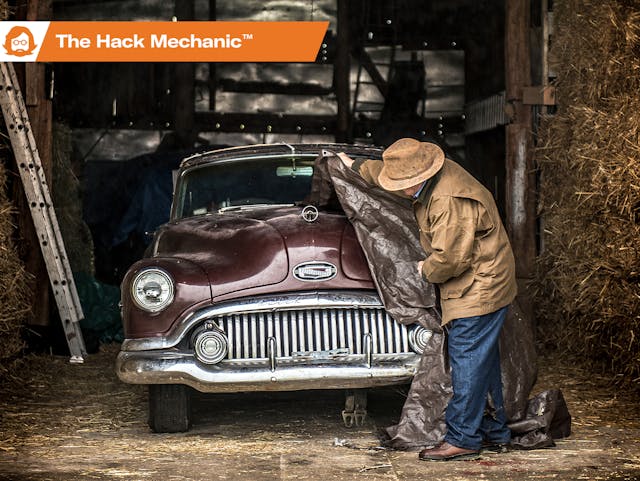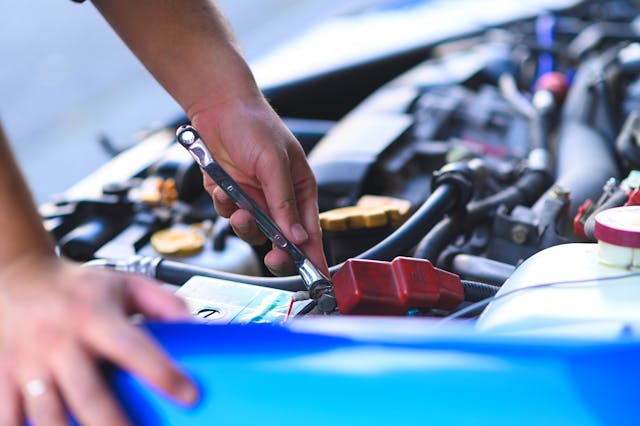5 essentials that allow your classic to sleep peacefully when the snow falls

Melissa Jones writes: I’m new to old cars. Is there anything special you do to prepare a car for winter storage?
Yes. How much or how little you do depends on the length of the layover and how thorough you want to be. Basically, you need to consider the fuel, the battery, the tires, rodent repellent, and a cover. If your winter is just two or three months, disconnect the battery and throw a cover on the car, but for a longer slumber, you’ll want to be more scrupulous.
Fuel

Most gas contains 10 percent ethanol, which is hygroscopic (it absorbs moisture from the air). If you live in a humid environment, it’s a good idea to store a car with the tank full, as it minimizes the possibility of water being absorbed from air in the unfilled portion of the tank. This is particularly important if the car is old enough that it has a metal gas tank; you don’t want water collecting at the bottom. Some folks swear by additives like Sta-Bil, which claim to break up water and keep the fuel from oxidizing. I’ve never had an over-the-wintered car have running problems attributable to old gas, but if three months turns to a year, you’ll be glad for the stabilizer. If you know in advance that the car is going into long-term hibernation, you’d be smart to drain the tank first and suck the carburetor’s float bowls dry, as the gooey varnish left by ancient gas can be problematic.
Battery

Cold temperatures and a parasitic drain will likely kill a battery before spring. If the car is stored where there’s electricity, a battery tender will keep the battery charged. Note that you generally want a maintainer, not a trickle charger; a maintainer is designed to stay connected to the battery, whereas a trickle charger should be disconnected when the battery is fully charged—and can overcharge the battery if it’s not removed. If the car is wintering somewhere where there’s no juice, simply disconnecting the negative terminal of the battery is very effective.
Rodent Repellent

The vicissitudes of time and fortune may slowly eat away at your treasured car, but between the nesting, the poop, the chewing, and the dying and stinking, the damage rodents can do quickly is astonishing. Reportedly, rodents don’t like smells, and some folks swear by Bounce dryer sheets, Irish Spring soap, peppermint oil, and other aromatics. Others have had luck with ultrasonic devices. Bottom line: Any rodent deterrent is better than nothing, and be prepared to react at the first sign of contamination before massive damage is done.
Tires

Having a car sit for several months will flat-spot the tires a bit, but when they’re driven and warmed up, they’ll probably work themselves round. Longer sits, though, particularly in cold weather, can permanently flat-spot tires. The best prevention is to use four jack stands and store the car with all four wheels up. Short of that, drive the car on occasion or at least move it in the storage space. It doesn’t take much.
Cover

This one’s the easiest. Even if the car is in pampered indoor climate-controlled storage, a cover will keep the dust, the critters, and the sun streaming through the windows off the paint, and those are all good things. That’s it. Just know that the best thing you can do is to keep the layup short, and if at all possible, exercise the car in the middle.

